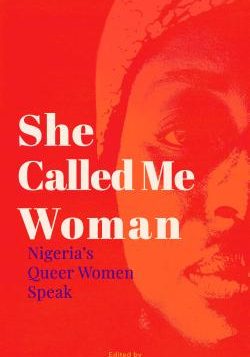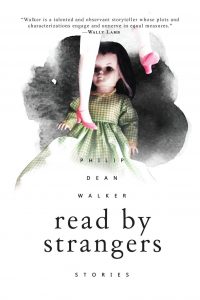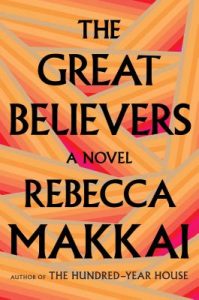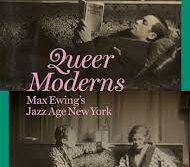This story collection is tautly written, unnerving, and often ghoulishly funny. Most of the stories are set in the contemporary U.S. and a few in urban Japan, where everything desirable is even more commodified than in the U.S. There are three sets of stories: family dramas, the adventures of male hustlers and the men who crave them, and tales of doomed heterosexual women. Walker’s ability to capture the inner life of his female characters has been praised, but I’m not so sure. The women in these stories all seem implausibly isolated because of their need for male companionship, without which their lives have no meaning. Meanwhile, competition between women prevents them from bonding. The male characters have other options, and even though their relationships are largely based on sex, their independence is taken for granted. Heterosexuality is shown as problematic, but the plots set in families with a mother and father at the center generally show the most emotional depth.
The stories set against a contemporary gay male backdrop are funnier, but no more comforting. The wittily titled “Brad’s Head Revisited, ’94” is narrated by a self-professed porn star, and “Three-Sink Sink” is a manual for wannabe male escorts. “Caravan,” which concludes the collection, is more alarming. When the regulars emerge from the one remaining gay bar in their city, they are surprised to find a fleet of school buses waiting to give them free rides so that they don’t have to drive home drunk. Sinister possibilities hang in the air. These stories are well-crafted, and the determinism in them seems characteristic of the current American zeitgeist: things are bad, and getting worse.
Jean Roberta
 She Called Me Woman: Nigeria’s Queer Women Speak
She Called Me Woman: Nigeria’s Queer Women Speak
Edited by Azeenarh Mohammed, Chitra Nagarajan and Rafeeat Aliyu
Cassava Republic Press. 340 pages, $16.95
She Called Me Woman: Nigeria’s Queer Women Speak is a glorious collection of 25 first-person accounts written by a wide array of queer women throughout Nigeria and an African diaspora influenced by employment opportunities and porous borders. The editors knew it was essential to insert women’s voices into the discussion. These voices can best be grasped if we listen to them directly.
ZH, for example, age 25, has thought things through: “In terms of sexuality, I am fluid. I do not tell everybody I am attracted to women. … I feel that when you choose to be around a group of people because of who they are, you are fetishizing them to some extent. I do not want to set my friends based on my sexuality.” Explains Aazeenarh Mohammed: “Queer women [in Nigeria]were … facing further marginalization due to their sexual orientation, gender identity and sex within a hetero-patriarchal societal, cultural and economic structure that manifests power and control in very different ways than for queer men. We felt there was such a lack of queer people’s stories in public discourse, particularly of women.” KZ, age forty, describes universals of cowardice and fear. “I have a friend who is married. She goes to events and I know about three women she has dated over the years. But on her Facebook page, she is so homophobic! She is covering up and that is what everybody is doing.” Writes HK: “I live with my partner now. We see each other every day, except when she is in Lagos. For the first time ever, I have someone taking care of me. I wake up in the morning and she is there with a cup of tea. It feels good to have someone there. I feel really loved by her.”
Sarah Sarai
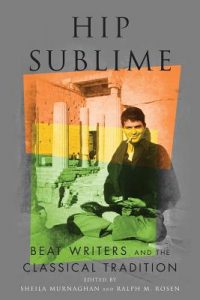 Hip Sublime: Beat Writers and the Classical Tradition
Hip Sublime: Beat Writers and the Classical Tradition
Edited by Sheila Murnaghan and Ralph M. Rosen
Ohio State U. Press. 292 pages, $79.95
This collection of studies on the effect of the classics on writers of the Beat poets and the San Francisco school includes some gay-themed material. There are chapters on Allen Ginsberg’s connection to the sexually exotic writings of Catullus and on the long reach of Sappho into Beat writing. There are some tasty anecdotes tucked away in these somewhat academic chapters, for example regarding Ginsberg’s excoriation of the prudish academic press: “Why have the Loeb Library texts been translated so as leave out the balls?” The Ginsberg chapter includes a discussion of his poem “Malest,” a sort of queering of Catullus’ work.
Among the other nuggets found here is a magazine dedication by Ed Sanders to, among others, “all those groped by J. Edgar Hoover in the silent halls of Congress.” Now there’s an image to spook the horses! Sanders was a devotee of Sappho, and the chapter on his work also focuses on hers. The Beat writers had very different styles and approached issues of sexuality in various ways. Philip Whalen’s poem “Scenes of Life at the Capitol” includes the rollicking lines: “If Socrates and Plato and Diotima/ And all the rest of the folks at that party/ Had simply eaten lots of food and wine and dope/ And spent the entire weekend in bed together/ Perhaps Western Civilization/ Wouldn’t have been such a failure?” That’s a better image to leave you with than J. Edgar Hoover.
Alan Contreras
This tragic novel tells two interconnected stories, capturing the fear and uncertainty of the AIDS epidemic during the 1980s and the lingering pain of those who lived through the crisis years later. The first story, set in Chicago, focuses on Yale Tishman, who’s helping to care for many sick and dying friends. It begins with a party held in honor of Nico, a recently deceased friend, attended by Nico’s supportive younger sister Fiona. In between, Yale, a development director at a university art gallery, discovers a collection of paintings from the 1920s that could make the gallery’s reputation. Yale must contend with the collection owner’s uncooperative family as well as difficulties in his relationship with his boyfriend Charlie. Yale himself gets sick, becoming even closer to Fiona, while participating in demonstrations.
Fast forward to 2015, and Fiona searches for her estranged daughter Claire, who may have fled to Paris with a boyfriend during her time in a cult. Fiona stays with an old friend, Richard, now a famous photographer preparing for a show, and encounters Jake, an American journalist fascinated by Richard and infatuated with Fiona. While more connections are revealed between the two stories, Fiona slowly understands how watching her brother and his friends die has impacted her relationship with Claire and others.
The novel is filled with details of AIDS symptoms, such as blindness and dementia, which gives it a deep sadness. Yale’s final days are particularly heart-wrenching. But the book also contains some incredibly touching moments, particularly the stories the paintings’ owner tells Yale of modeling for one of the artists, and friends caring for sick community members. The book shows how the tragedies of the past affect us years later.
Charles Green
 Welcome to Fairyland: Queer Miami before 1940
Welcome to Fairyland: Queer Miami before 1940
by Julio Capó Jr.
U. of North Carolina Press. 400 pages, $29.95
In one of the most innovative and important recent works in LGBT history, Julio Capó Jr. traces how Miami became a city where “leisure and entertainment were central to every aspect of life.” Fundamentally shaped by real estate speculation and leisure economies, Miami emerged almost overnight in the early 20th century, marketing itself as a safe gateway to the Caribbean located “just south of the South” and a “fairyland” for tourists. An economy of openness tolerated transgressions of gender and sexual norms, and Capó documents how “residents and boosters fought hard to both combat and capitalize on” the city’s early reputation. But he also shows that there are many Floridas, all of them worth a closer examination.
The most important contribution of Welcome to Fairyland is that it links Florida’s LGBT past to the labor and immigration history of the Caribbean. Bahamian migrant laborers constructed the city, some of them arriving in search of same-sex partners, all of them marked as socially deviant or queer. Under close police scrutiny, black workers’ experiences “often rendered Miami much more a nightmare than a recreational playground.” Tracking back and forth between locals, tourists, and migrant laborers, Capó charts the city’s history of motion from its earliest days through the 1920s real estate boom and into the Great Depression.
This is a book that would be very easy to write badly, whether shallow and gossipy or focused exclusively on a handful of prosperous tourists. Capó is clearly committed to getting it right. He is no stranger to queer theory but is clearly more at home in the archives, where he has uncovered astonishing finds that recover the remarkable past of a city that too many people believe has no history to speak of.
Christopher Capozzola
Juliet, Naked
Directed by Jesse Peretz
Juliet, Naked is a deceptively simple film that touches on a number of 21st-century themes. Ethan Hawke stars as the lost-but-not-forgotten singer-songwriter Tucker Crowe, whose brief career decades earlier is the focus of a cult-like fanclub that’s devoted to his music. We meet Tucker as a middle-aged American man when Annie, the British girlfriend of his number one fan, accidentally initiates an on-line dialog. Eventually Annie is destined to meet Tucker in person, along with his many children from a series of ex-girlfriends, who all converge on London after Tucker has a mild heart attack.
One review I read thought the film was all about the angst of the Gen-Xers as they reach middle age. It was certainly about the changing American (and British) family, with half-siblings, blended households, and estranged relatives running riot (almost literally in one hospital scene). Or you could argue that it’s all about modern fandom and the weird cults that grow up on the Internet around creative artists who burst forth and flamed out. But it is a minor subplot that I found intriguing: the presence of a sassy lesbian character, Annie’s sister Gina. She’s completely accepted by Annie (of course) and even serves as an advisor in matters of the heart—even as Gina herself searches for love.
What’s interesting is the extent to which it has become routine, if not de rigueur, for an LGBT character or couple to be worked into the plot of an otherwise heterosexual indie film (especially the romcom). Perhaps there’s an element of tokenism here, but it sure beats invisibility. More to the point, it reflects the reality that LGBT people have assimilated into mainstream families and communities. No doubt the indie film as a worldview is ahead of the cultural curve on this, but the easygoing sex-and-gender world that it envisions does have its appeal.
Wendy Fenwick

